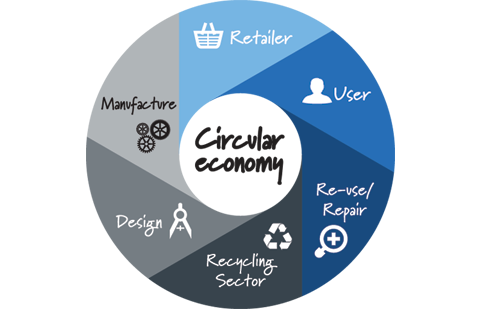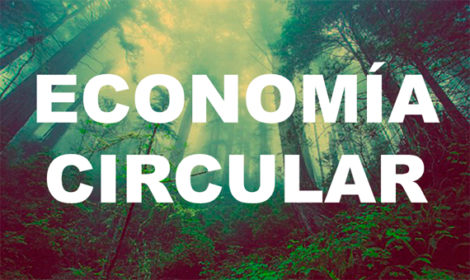The exponential growth of the world population and, as a direct consequence, the increase in economic activity and global energy demand contribute to the depletion of natural resources, the increase in the price of raw materials and its greater volatility and global warming. , due to the increase in CO2 emissions.
Through these parts of the American continent, even many consumers are not aware of the impact of human beings on the planet. Nevertheless; a study conducted by the Nielsen consultancy in Spain (2015), the environmental factor was decisive for 35% of consumers and, even, 40% of them said they would be willing to pay more for products of socially committed brands, a fact that It grew to 45% in 2017.
In this way, the so-called “eco-innovation” emerges with force, as a differentiating element and as an essential business strategy to guarantee the competitiveness and viability of companies in the medium and long term. Eco-innovation is defined as the introduction or modification of a product or service, component, production process or business model in order to reduce the environmental impact of economic activity. In addition, since it is a cross-cutting activity, it can be present in any sector of the economy.
Beyond the environmental and social benefits, eco-innovation offers new business opportunities to companies and brings multiple benefits to their activity:
- Access to new markets, customers and categories of products and services.
- Business models that are more competitive and adapted to global challenges, as well as greater differentiation and competitive advantage.
- Increase in productivity thanks to the more efficient use of resources.
- Cost savings in materials and energy in the production phase.
- Prevention of costs thanks to the anticipation of new governmental standards and regulations that may affect the productive system.
According to the survey From the Stockholder to the Stakeholder, of the University of Oxford and Arabesque Partners, between 2012 and 2014, the global market of sustainable investments registered a growth of 60%, concentrating mainly in Canada, the United States and Europe.
In this way, good examples appear in the world in the application of eco-innovation, such as:
Method A case of eco-innovation based on the product and its components is that of the company Method, created in 2001 in the United States and dedicated to the production of lower CO2 emissions to facilitate the customer’s choice. The results of these measures were noted in customer loyalty and sales: brand loyalty increased by 27% between 2007 and 2009, and sales of low-impact menus have increased by 28% since the introduction of the new labeling
Solis As an example of eco-innovation in the production process, we can cite Nestlé’s “Solís responsable” initiative. Started at the end of 2014, this strategy is based on what Solís, a brand specializing in tomatoes, calls “integrated production system”, which consists of local production of raw materials, collection at the optimum point of maturation and immediate processing and the reduction in the use of pesticides and chemical fertilizers. The initiative achieved that Solis recovered ground with respect to the white marks and that the value of its sales grew by 2.8%.
Towards a “Circular Economy”
But the changes in favor of a greater environmental sustainability in the companies we find ourselves with an economic system that rethinks the patterns of production and consumption and that has a very positive impact on economic activity as well as on society and the environment. We are talking about the “circular economy”, an economic model that arises from the real awareness that natural resources are finite and the need to preserve them and dissociate economic growth from their exploitation.
In this way, the circular economy encompasses different strategic axes, ranging from limiting the consumption of natural resources, limiting the generation of waste and its use, to maximizing the use of existing goods.
To understand why the circular economy owes its name, it is based on turning the economic cycle into a closed cycle in which the product and its components and materials are maximized, minimizing or eliminating the exploitation of natural resources and the generation of waste. This is achieved through several activities:
- Reuse: give a second life to the products in the second-hand market and encourage the shared use of idle goods.
- Repair: encourage the repair of products in poor condition instead of replacing them with new products.
- Remanufacturing: reintroducing the products in the productive cycle to update their obsolete components or replace the dysfunctional ones and, thus, re-market them.
- Recycling: once all the possibilities mentioned above have been exhausted or discarded, decompose the product and recycle its materials.
This implies the design of products from the beginning taking into consideration the impacts they will have on the environment throughout their life cycle, to enable and facilitate their subsequent repair, remanufacturing or recycling.

What examples are there of it?
Fairphone This company manufactures the first modular and ethical smartphone in the market. It is “modular” because all its components can be easily replaced by the consumer with the simple use of a screwdriver, either by breakdown or to update them; and it is “ethical” because its materials come from exploitations free of armed conflicts and labor exploitation, so that, in addition to the environmental criterion, the product incorporates the social criterion.
H & M. A company that many of us know with branches in Europe and the US, with very important advances in the field of circular economy and that represents a particularly relevant example for its weight and influence in the market is H & M. The clothing manufacturer encourages consumers to take the clothes they no longer use to their points of sale in exchange for a discount coupon for their establishments. The clothes collected by H & M are sold in second-hand markets if they are in good condition or if only small repairs are needed; or it is broken down into textile fibers that are used to make new clothes, in case it is too damaged.
Ecoalf But if it is to exemplify the disruptive power of the circular economy and its potential to change the economic paradigm, as we said before, the model of the company Ecoalf is very inspiring about how to integrate the concept into the core of the company’s activity circular. Ecoalf is a Spanish firm that designs and manufactures fashion items with recycled materials: plastic bottles, fishing nets, used tires, post-consumer coffee, wool, etc. Due to its positive impact on society, the local economy and the environment, its project to clean the seas of plastic waste is particularly interesting: through agreements with local organizations and with fleets of boats from the area, they are collected from the seas fishing nets and plastic bottles that the company then processes and transforms into clothes, suitcases and backpacks.
In this sense, we can relate the phenomenon of the collaborative economy with one of the activity axes of the circular economy: maximize the use of the goods produced when they are idle.
In conclusion, the adoption of the circular economy makes it possible for corporate sustainability to stop being a topic of the Corporate Social Responsibility (CSR) departments in order to become the core of its activity, transforming existing business models and revolutionizing the way we design, produce and consume products or services. It is a model in which the maladjusted companies will stop being competitive and will be destined to reinvent themselves or to disappear.
ARE YOU INTERESTED TO MAKE A COMMENT?
![]()
